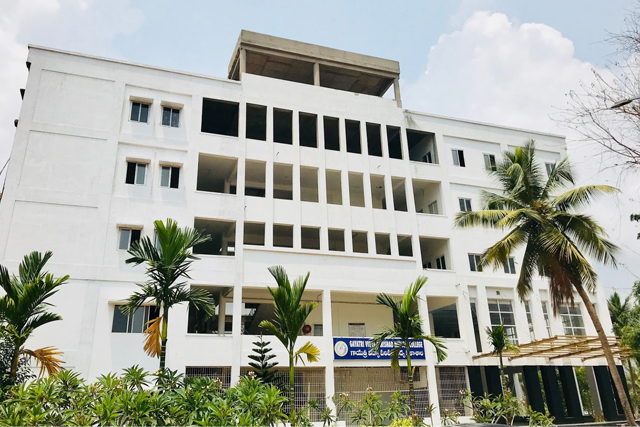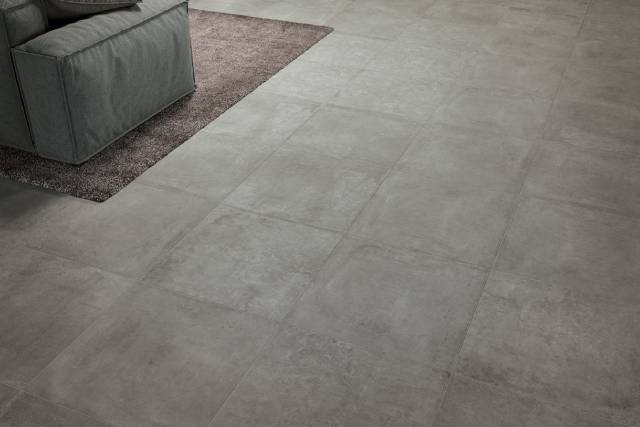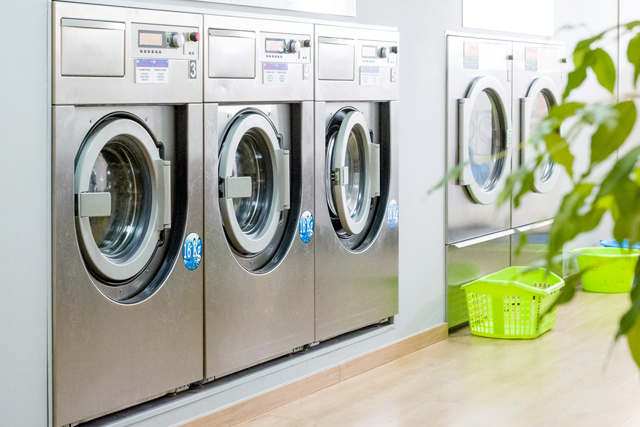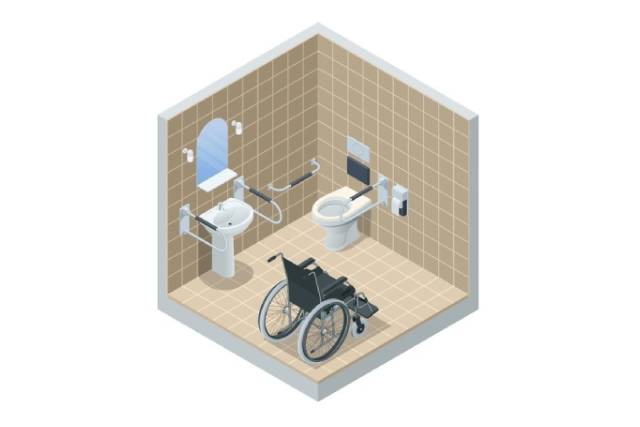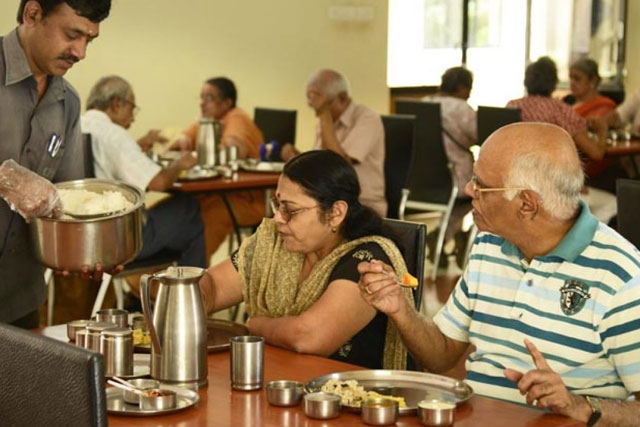Summary
India has run multiple Government-Funded Health Insurance schemes (GFHIS) over the past decades to ensure affordable healthcare. We assessed GFHIS evolution with a special focus on two national schemes – Rashtriya Swasthya Bima Yojana (RSBY) and Pradhan Mantri Jan Arogya Yojana (PMJAY). RSBY suffered from a static financial coverage cap, low enrollment, inequitable service supply, utilization, etc. PMJAY expanded coverage and mitigated some of RSBY’s drawbacks. Investigating equity in PMJAY’s supply and utilization across geography, sex, age, social groups, and healthcare sectors depicts several systemic skews. Kerala and Himachal Pradesh with low poverty and disease burden use more services. Males are more likely to seek care under PMJAY than females. Mid-age population (19–50 years) is a common group availing services. Scheduled Caste and Scheduled Tribe people have low service utilization. Most hospitals providing services are private. Such inequities can lead the most vulnerable populations further into deprivation due to healthcare inaccessibility.
Introduction
In 2019, 193 countries including India unanimously affirmed their strong political commitment to universal health coverage (UHC) in a high-level meeting conducted by the United Nations. UHC means that all individuals receive quality health services without suffering financial hardship. Achieving UHC is, therefore, subject to a geographically and financially accessible, and culturally appropriate health system with adequate and quality human resources and infrastructure. According to the 75th round (2017–18) of the National Sample Survey, 12% Indians have unmet health needs. Inability to afford healthcare i.e. financial inaccessibility is one of the factors responsible for the unmet needs and, therefore, is a hindrance to UHC in India. India’s healthcare is financed by multiple sources – domestic government sources, private sources, and external/global sources. Out-of-pocket expenditure (OOPE), a major source of health financing in the country, contributes to 54.7% of total health expenditure. High OOPE has several disadvantages. First, financial shock due to OOPE can push people into poverty and can force them to cut down subsistence costs (food and clothing). Second, OOPE contributes to low health service utilization rates as people may avoid using unaffordable services. Third, OOPE is an inequitable and regressive health expenditure method as everyone pays the same fee for the service regardless of differences in paying ability. Hence, the felt burden of OOPE is greater on people in lower wealth quintiles than those in the upper wealth quintiles. In India, in 2018, 16.51% people faced catastrophic health expenses i.e. CHE (at a 10% threshold level), and 3.3% people were pushed into poverty due to OOPE on health.
Among several, one way to reduce OOPE is by increasing government health expenditure (GHE). The government spends on infrastructure, human resources, and service delivery at public hospitals, vertical health programs, and government-funded health insurance schemes (GFHIS). The current review focuses exclusively on GFHIS due to three reasons. First, the share of GFHIS and other forms of health insurance schemes in the overall health financing has increased several folds in India. Second, there is limited literature on how multiple GFHIS have operated and evolved, especially the recent Ayushman Bharat Pradhan Mantri Jan Arogya Yojana (AB-PMJAY) or PMJAY. Third, PMJAY is high on India’s health policy and political agenda. Under GFHIS, healthcare costs are subsidized or paid for entirely by the government. Ideally, GFHIS should provide financial protection to the entire population. However, there is a huge economic divide in India with around 10.01% of people still living under the international poverty line of $2.15 per day. The vulnerable population groups e.g. Scheduled Castes, Other Backward Classes, Islamic population, and families with children and elderly have higher cases of CHE. Also, the incidence of impoverishing health expenditure (IHE) is higher in rural areas and poorer states compared to urban areas and richer states. Therefore, the government prioritizes the protection of people with low household incomes and at risk of impoverishment by covering their healthcare expenditures. Details about the differences in demography and geography of India are given in Panel 1. Recently, in 2018, India launched one of the biggest GFHIS, PMJAY, to protect its vulnerable populations. This scheme does not ensure UHC but protects the most vulnerable people from financial hardships encouraging them to seek healthcare which is a step toward UHC.
Pradhan Mantri Jan Arogya Yojana
We used an equity-based framework for evaluating publicly funded health insurance programmes proposed by Nandi and Schneider for PMJAY’s assessment.
Policy process and political context
The Bharatiya Janata Party (BJP) came to power in the 2014 general election and Shri Narendra Modi was sworn in as the Prime Minister of India. Providing affordable, accessible, and quality healthcare services was a part of BJP’s 2014 election manifesto. As a step towards satisfying the party’s health-related agenda, a new national health policy draft was released in 2017. NHP 2017 provided several recommendations on the structure and implementation of GFHIS. These recommendations and limitations of the existing RSBY created an opportunity for a new GFHIS. In response to this, PMJAY was announced in February 2018 Union Budget and launched in September 2018 by the Ministry of Health and Family Welfare (MoHFW), Government of India. The launch came just before the 2019 general elections where the ruling party was running for a second term and made healthcare an election agenda item for the first time in Indian politics. This was most likely in response to the known insight on healthcare inaccessibility being the second most important concern among Indian voters after better employment opportunities. The rise in interest in GFHIS can also be partly attributed to the global movement toward UHC and India’s ambition to demonstrate its commitment to protecting the health of its people in the global community.
Goal, design, targets and implementation of PMJAY
The five-year vision of the scheme is achieving SDG 3.8 i.e. ensuring financial protection against CHE and access to affordable and quality healthcare for all. The scheme provides a cover of Rs. 500,000 per household for secondary and tertiary-level health services to about 50 crore beneficiaries belonging to the bottom 40% of the population. Currently, PMJAY beneficiaries can avail health services included in 920 health packages that consist of 1670 procedures across 24 specialties. The beneficiaries can utilize strategically purchased services from both public and empanelled private hospitals. As of July 2021, approximately 23,000 hospitals were empanelled under PMJAY. Households eligible under PMJAY are identified by applying specific ‘Deprivation and Occupational criteria’ to the Socio-Economic Caste Census 2011 (SECC 2011). Additionally, RSBY beneficiaries are also covered irrespective of their SECC status. SECC deprivation criteria are more inclusive than RSBY’s economic criteria as they consider parameters like caste, residence, and occupation in addition to income for beneficiary identification. However, the SECC-based criteria also have drawbacks that are detailed in PMJAY has a hierarchical implementation model with the National Health Authority (NHA) as the apex body responsible for its execution through State Health Agencies (SHAs). Each participating state has one SHA that empanels public and private hospitals under its jurisdiction. SHAs have autonomy to extend PMJAY’s coverage to non-SECC beneficiaries, and modify treatment package rates. Each SHA can choose between three modes of implementation – a) Insurance model – SHA selects an insurance company to manage PMJAY, b) Trust model – The state government directly pays compensation to the providers without the intermediation of an insurance company, c) Mixed/Hybrid model – Both state and insurance company manage claim settlements. Below SHA, a District Implementation Unit (DIU) is established to support the implementation in every district. States can decide whether or not to participate in PMJAY. States can also continue with their existing GFHIS with varying degrees of collaboration with PMJAY (e.g. Andhra Pradesh, Karnataka, Kerala, Madhya Pradesh (MP), Meghalaya, Punjab, Rajasthan, Tamil Nadu (TN), and Telangana). PMJAY states which previously did not have state-GFHIS are called greenfield states while states which previously had GFHIS scheme are called brownfield states As of April 2022, PMJAY has been implemented in 33 states and union territories (UTs) except in Delhi, West Bengal, and Odisha.
PMJAY does not have fixed targets for the annual volume or value of hospitalizations to be covered as it operates on beneficiary demand for health services. Concerning the impact on CHE reduction, the proportion of SECC-eligible households spending 25% of household consumption on health-related expenditure (or CHE-25) is expected to fall from 16% to 10% if the PMJAY expansion is equivalent to brownfield states’ GFHIS. If PMJAY take-up occurs at par with the better-performing states this reduction is expected to be from 16% to 1%. The overall progress of the PMJAY from 2018 to 2022 can be seen in.
Since the scheme is in its early stage, details of ground-level implementation experiences and challenges are limited. However, a cross-sectional study in Uttar Pradesh (UP) indicated that a majority of hospitals (93.5%) were satisfied with the empanelment process. Satisfaction concerning packages was low (35.5%). Overall, PMJAY was perceived to be inferior to private insurance by 77.4% of providers due to poor grievance redressal mechanisms, claim processing delays, and lower health packages rate which has resulted in disinterest in implementing scheme and sometime suspension of implemented scheme. Insurance agencies also concurred that premium rates quoted are low (about ten times lower than the market prices).
Financing PMJAY Scheme
PMJAY is entirely funded by state and central government in a predetermined ratio as specified by the Ministry of Finance. The central government allocated 1.8% of GDP to health in the 2022-23 budget. Approximately 7.5% of this fund, amounting to Rs. 6412 crores is dedicated to PMJAY. The 15th Finance Commission estimated that to provide services to the bottom 40% of the population, costs (including Centre and State budgets) of PMJAY for 2019 could range from Rs. 28,000 – Rs. 74,000 crores. However, funds allocated to PMJAY in 2019 were substantially less than the estimated costs (88.5%–95.5% lower). The per-capita expenditure on the scheme was much lower than the average national per-capita OOPE incurred. Additionally, there are concerns that PMJAY is diverting funds from other health budget sections including non-communicable diseases, communicable diseases, and family welfare. This is because the GHE has not increased parallelly to the funds allocated to PMJAY. For example, in 2019–20, while the overall health budget increased by 16.3% compared to the previous budget, the funds allocated to PMJAY increased by 166%. There is also the issue of inequitable allotment of funds to states as shown in. Thus, PMJAY’s budget allotment needs to increase to the estimates provided by the 15th Finance Commission Report. Additionally, the scheme’s budgetary requirements should be assessed regularly based on the expenses incurred, existing deficits, and stakeholders’ feedback.
State-wise per-capita out-of-pocket expenditure on health and funds allocated to PMJAY. PMJAY: Pradhan Mantri Jan Arogya Yojana, HP: Himachal Pradesh, J & K: Jammu and Kashmir. Odisha, West Bengal, and Delhi do not implement the PMJAY scheme. Values for out-of-pocket expenditure (OOPE) are for the years 2017–18 and values for funds allotted are for 2018–19. In figure (a), OOPE values were taken from National Health Accounts 2017–18. Data for the per-capita out-of-pocket expenditure was unavailable for Sikkim, Arunachal Pradesh, Nagaland, Manipur, Mizoram, Tripura, and Meghalaya. In figure (b), funds allocated for PMJAY for 2018–19 were taken from the answer to Lok Sabha 2019 starred question no. 170. States like Uttar Pradesh, Andhra Pradesh, and Kerala with higher per-capita OOPE receive lesser funds for PMJAY implementation than Tamil Nadu with lesser per-capita OOPE.
Beneficiary awareness and enrollment
PMJAY has employed several communications platforms including field drives, letters, information kiosks, print media campaigns, volunteers, websites/apps, etc. A 2021 national household survey showed that over 70% of households in states implementing PMJAY were aware of the scheme while only 16% were enrolled. Awareness and enrolment were higher in urban areas than in rural. Awareness and enrolment levels were the lowest among households in the first and second economic quintiles and increased progressively in the third, fourth, and fifth quintiles. State-level variations in beneficiary awareness and enrollment are detailed in Supplement Text S2.1 and Supplement Table S3. Thus, overall, the scheme is failing to target the most vulnerable population. This mistargeting can risk inequitable demand and utilization of PMJAY.
Monitoring and evaluation
NHA has created an Anti-Fraud and Abuse Control framework that acts as a guideline for fraud detection and prevention. The National Anti-Fraud Unit (NAFU) implements this framework with the support of State Anti-Fraud Units (SAFU). NAFU and SAFU monitor the utilization of services, conduct medical audits, issue anti-fraud advisory notes, and take action against fraudulent empanelled hospitals which can cause de-empanelment. NAFU also uses data analytic tools to detect suspicious transactions, e-cards, and entities. In 2020–21, 207 hospitals were de-empanelled and about 4.5 lakh fraudulent e-cards were disabled. NHA along with the Quality Council of India provides quality certification to the empanelled hospitals if they fulfill pre-decided standards. There are three levels of certifications – Bronze, Silver, and Gold and hospitals achieving these certifications are provided 15%, 10%, and 5% higher package rates, respectively.
Insurer/Implementation Support Agency Monitoring & Performance Analysis Core Team (IMPACT) monitors the performance of Insurers, Implementation Support Agencies, and Third Party Administrators by measuring claim turnaround time, workforce productivity, claim rejections validity, etc. Central Grievance Redressal Management System (CRGMS), dedicated call centres, and grievance redressal guidelines have been established to redress grievances of beneficiaries, healthcare providers, insurers, etc. 88% of total registered grievances had been resolved using the CRGMS. NHA has created a Management Information System (MIS) which includes information about state’s and district’s empanelment, hospital procedures, beneficiaries, etc. in the form of dashboards. Data from MIS has been used to remove or add new packages under the scheme by measuring utilization. NHA disseminates knowledge and experience regarding scheme progress through Policy Briefs and Working Papers. However, raw data of any monitoring methods are not available publicly. Creating channels for data sharing is crucial to ensure data transparency for all stakeholders.
Equity of supply and utilization of PMJAY
Inequities in healthcare access and population level outcomes are present across multiple intersecting dimensions including geography, sex, age, caste, religion, etc. These inequities are also reflected in the supply and utilization of services under PMJAY. To assess equity in PMJAY’s supply side components, we measured the number and distribution of empanelled hospitals. Information about supply-side components like medical equipment, drugs, and health workforce was unavailable. To assess utilization-side components of PMJAY, we measured claim volumes, claim values, and enrollment rates.
Geography
States with higher poverty headcounts and disease burdens are considered to have a higher need for PMJAY and vice versa. However, the utilization in terms of claim volume and value is higher in states with lesser needs e.g. Kerala and Himachal Pradesh, and lesser in states with higher needs e.g. Bihar, MP, UP, and Assam. This discrepancy in need vs. utilization is due to poor supply-side factors including a low number of empanelled hospitals, an inefficient beneficiary identification system, and weak health governance in states with greater poverty and disease burdens. A similar pattern is seen at the district level, where socio-economically backward districts (also known as aspirational districts) have lower beneficiary identification rates, total number of claims, and total claim amounts than non-aspirational districts. The majority of aspirational districts are located in Jharkhand, Orissa, and Chhattisgarh. The state-level variations in utilization and supply are further detailed in a and b. Additionally, specialty-wise geographical utilization and supply patterns that need attention are mentioned in Supplement Tables S4 and S5.
State-wise geographic variation in supply and utilization of health services under PMJAY (a) Percentage of eligible beneficiaries enrolled, (b) Empanelled hospitals per 100,000 eligible beneficiaries, (c) Hospital admission rate per 100,000 enrolled beneficiaries, (d) Per-capita expenditure on hospital admission (in Indian Rupees), (e) Percentage of female admissions in private hospitals, (f) Percentage of SC admissions in private hospitals, (g) Percentage of ST admissions in private hospitals. PMJAY: Pradhan Mantri Jan Arogya Yojana, HP: Himachal Pradesh, J & K: Jammu and Kashmir. Odisha, West Bengal, and Delhi do not implement the PMJAY scheme. In figures (a)–(d), the values of enrolled beneficiaries, empanelled hospitals, value, and volume of hospital admissions are from September 2018 to July 2021. Values of eligible beneficiaries are for the most recent year i.e. 2021. The values of enrolled beneficiaries, empanelled hospitals, value, and volume of hospital admissions were taken from the answer to Lok Sabha 2021 unstarred question no. 917. The number of eligible beneficiaries for the year 2021 was taken from the ‘state at a glance’ sheet given at www.pmjay.gov.in. Data for the number of beneficiaries enrolled was unavailable for Rajasthan and Andhra Pradesh. Data for the number of hospital admissions was unavailable for Rajasthan, Andhra Pradesh, and Telangana. Data on the value of hospital admissions was unavailable for Telangana. In figures (e)–(g), the number of private hospitalizations for females, SCs, and STs was taken from the answer to Lok Sabha 2021 unstarred question no. 3014. Total hospitalizations (public and private) were taken from the answer to Rajya Sabha session 250 question no. 2522 and Lok Sabha 2021 unstarred question no. 3014. The total number of private hospitalizations was calculated by multiplying total hospitalization with the percentage of private hospitalizations obtained from the policy brief on ‘PM-JAY: Role of Private hospitals’. Data on the percentage of Scheduled caste (SC), and Schedules tribe (ST) patient hospitalizations in private hospitals were unavailable for Ladakh, Rajasthan, Telangana, Goa, Arunachal Pradesh, and Tamil Nadu. Data on the percentage of female patient hospitalization in private hospitals was unavailable for Ladakh, Rajasthan, Telangana, Goa, Arunachal Pradesh, and Tripura.




